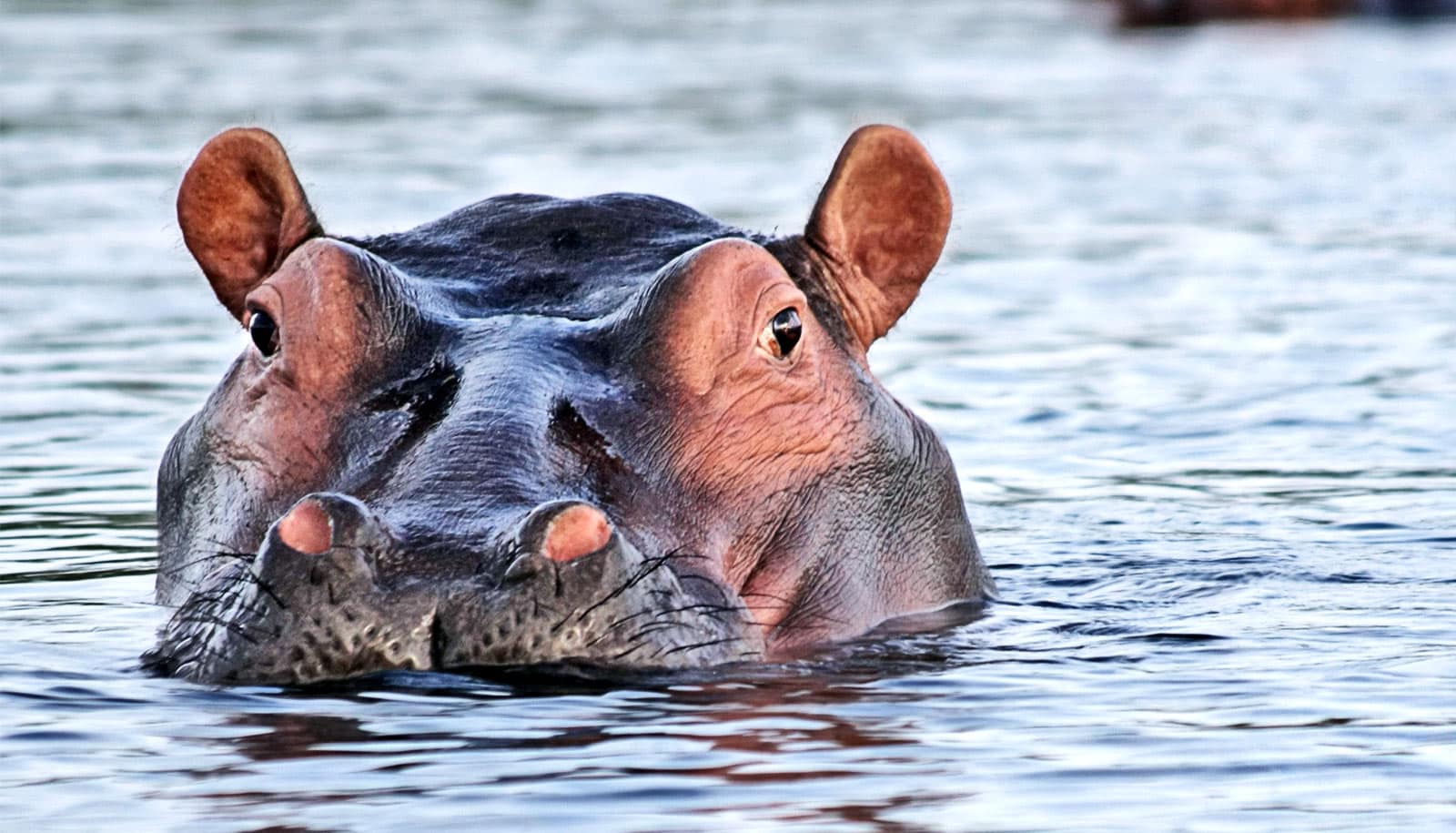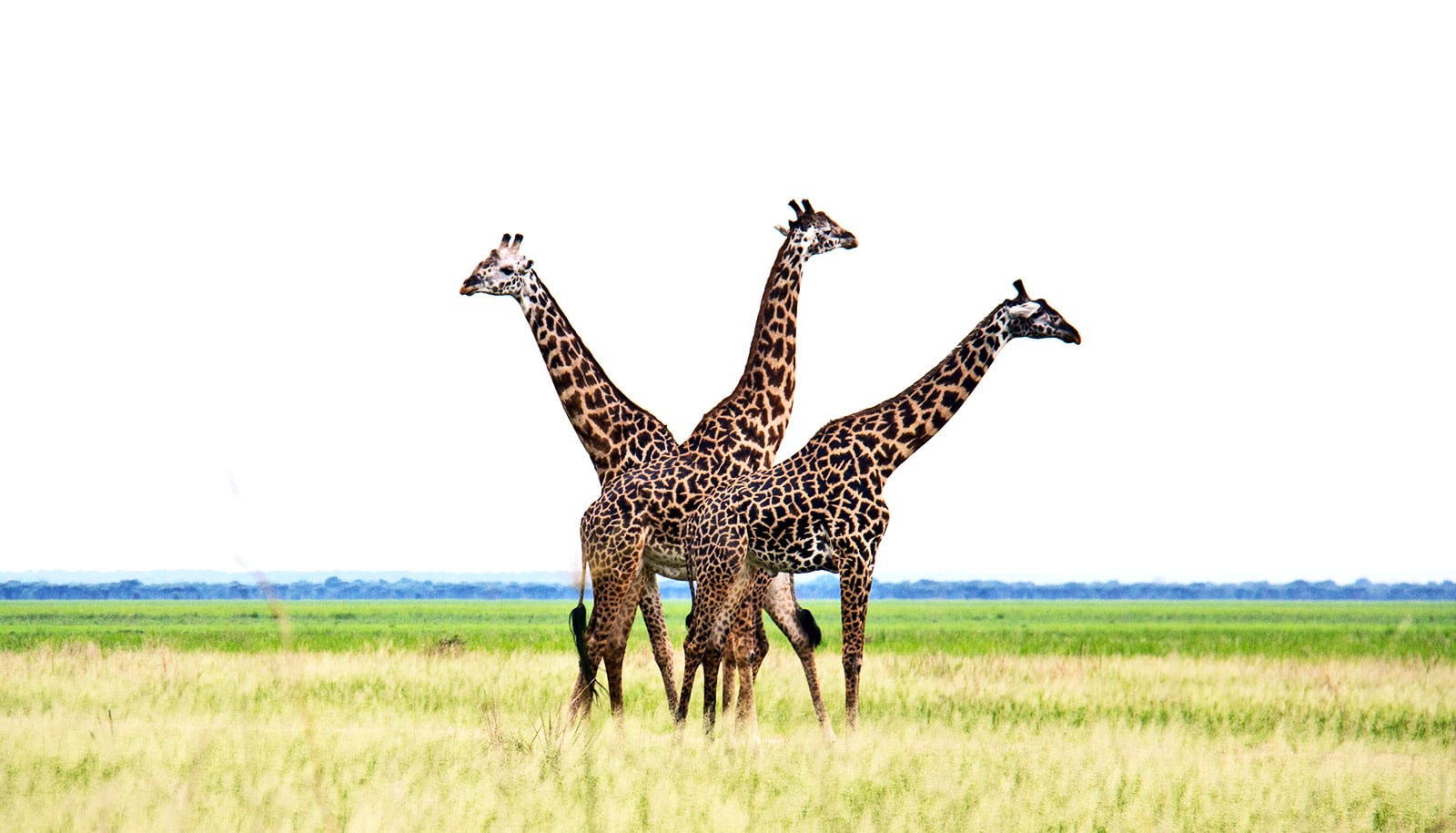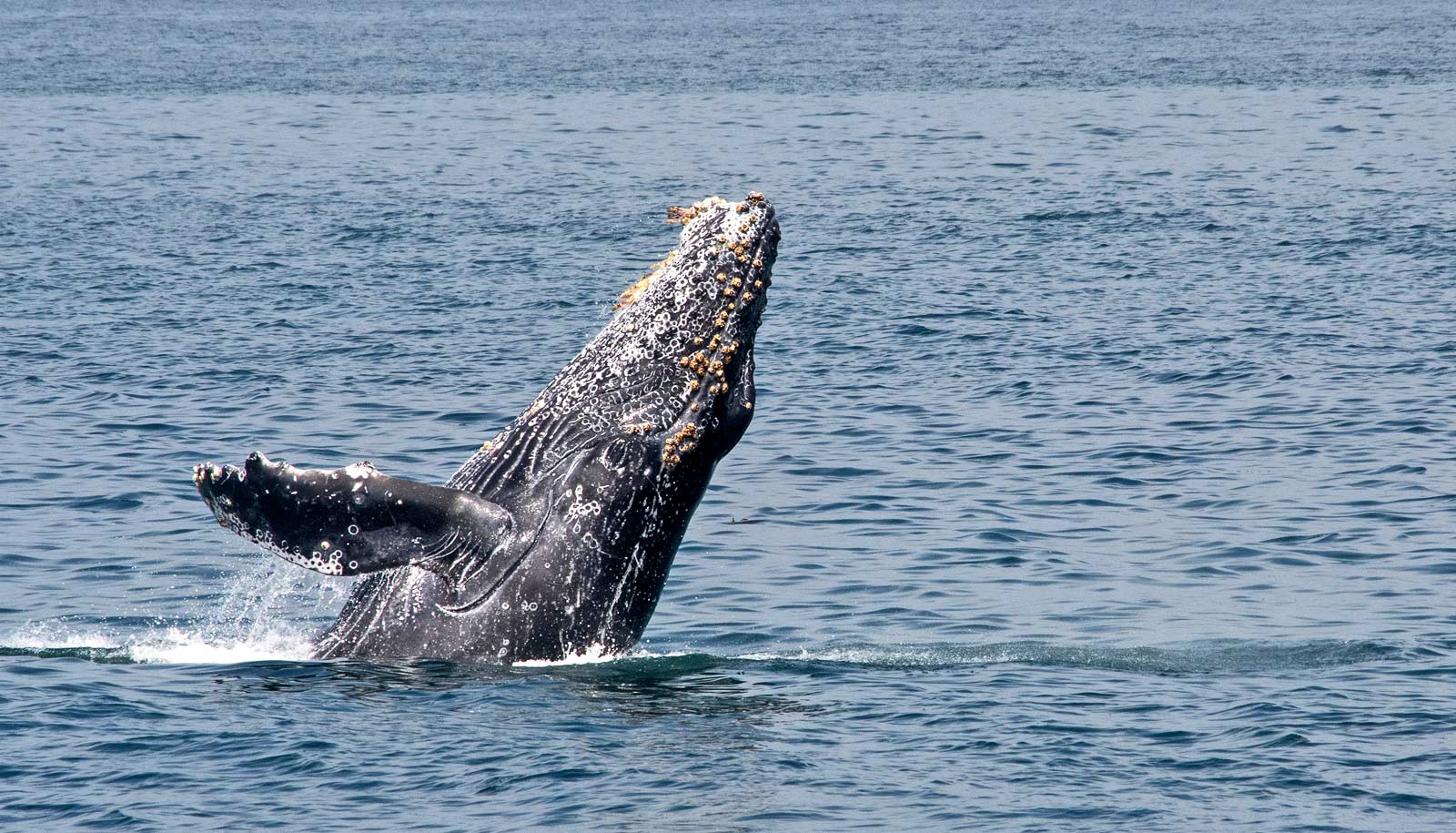Scientists are the first to electronically tag a hippo, which could help keep track of the animals’ movement and land use.
Hippos and people have shared savannas of Africa for hundreds of thousands of years, but we know little about where hippos go, and why.
“The lack of data on hippo movement has been a big blind spot in hippo conservation,” says Douglas McCauley, an associate professor in the ecology, evolution, and marine biology department at the University of California, Santa Barbara. “And if you don’t know where a hippo goes, how in the world can you design a thoughtful management plan for the species?”
Primarily two factors drive hippo movement: water sources and food availability. They spend their days submerged in rivers and pools to avoid the harsh sun. At night, however, they move onto dry land to graze on the swaths of short grasses their wide mouths have adapted for mowing.
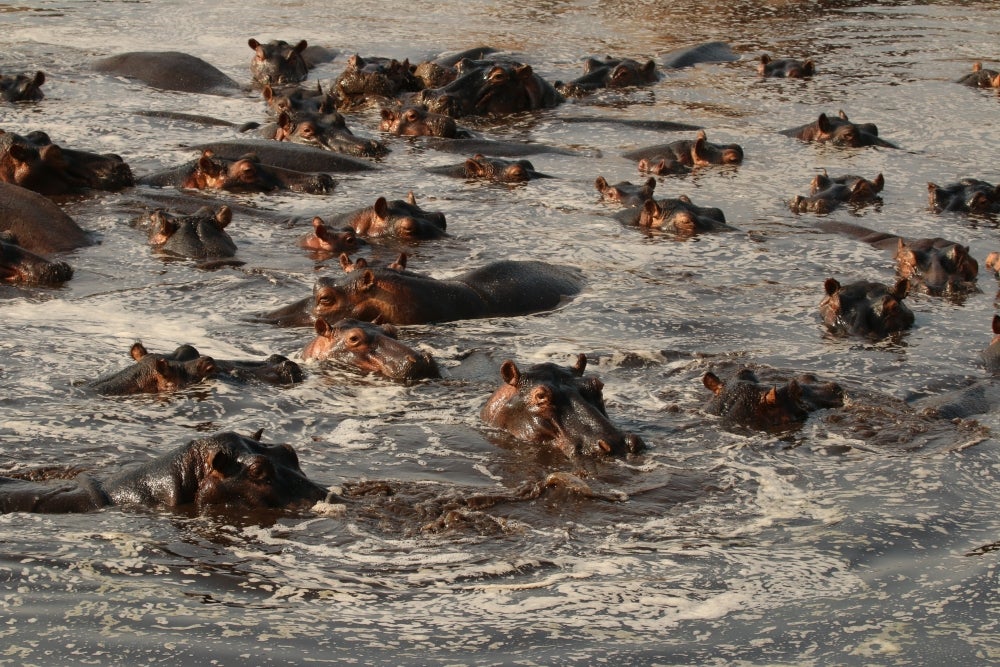
The animals have a pronounced impact on the aquatic ecosystem, introducing nutrients from the land into the rivers and pools in which they live. While a lot of research has focused on hippos’ terrestrial impacts, it’s only over the past few years that scientists have brought attention to their effects on aquatic ecosystems. The new paper, published in Scientific Reports, represents the first long-term study on their movements.
“The results provide us with a fascinating and overdue look into the secret lives of hippos,” McCauley says.
Tracking challenges
Generally, scientists track large animals with GPS or radio collars, a technique that has been a mainstay of ecology for decades. Unfortunately, hippos present some challenges to this approach.
Hippos have very stout necks, making it tricky to fit them with collars. Instead, postdoctoral researcher Keenan Stears, who led project, put the tracking device around the animal’s ankle, a technique he adapted from work done on rhinos. But hippos also spend half their time in the water, meaning the electronics have to be waterproof, and GPS reception would be limited to their nightly forays on land. In fact, the team programmed the transponders to shut off during the day to conserve battery life. The devices would break off after about a year.
Another obstacle: hippos are extremely sensitive to opioids, the primary drugs used in tranquilizers. To solve this, the veterinary team used a drug specifically designed for animals like hippos, and only darted individuals on land.
To top off all these challenges, hippos are one of Africa’s most dangerous animals, so they can be tricky to approach. “It’s all fine if they’re running away from you,” says Stears. “When they’re coming at you it’s not a good sign.”

Hippos go where the water is
“We wanted to understand how hippos use their landscape and ultimately, how changes in river flow may shape patterns of hippo movement and space use,” Stears says. He realized that tracking adult males would give him the best glimpse.
Like most rivers in Africa, the Great Ruaha River experiences seasonal variation in flow. However, due to increased water extraction by humans, the river now stops flowing completely during the dry season.
“The extremely dry conditions of the Great Ruaha River allowed us to safely collar hippos away from water and provided the ideal location to link altered river flow with hippo movements,” Stears says.
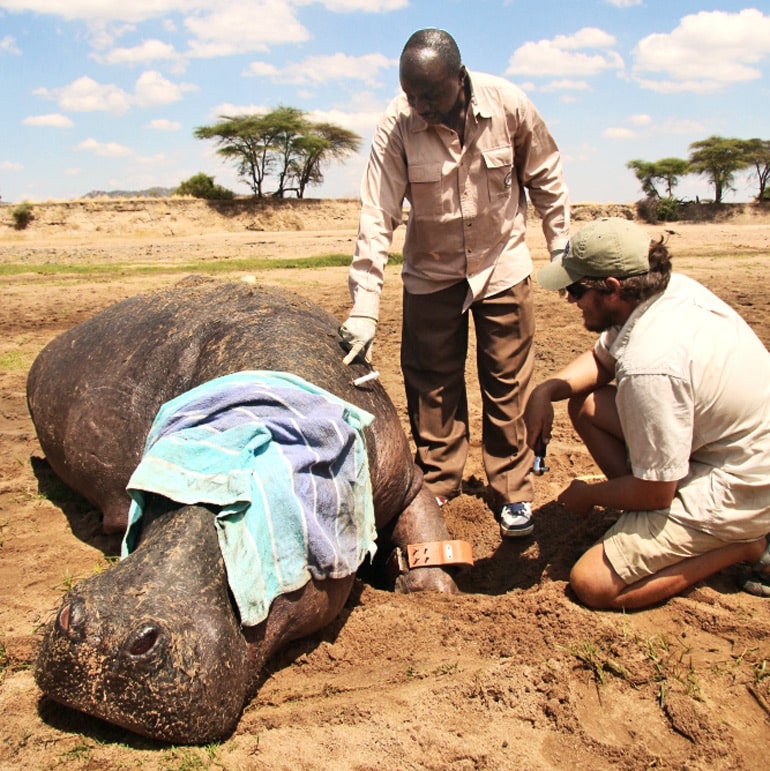
During the dry season, the river shrinks into scattered pools, each of which serves as the domain of a dominant male who welcomes females and juveniles that seek shelter. When one pool dries up, female hippos can simply move to the next. However, times are tough for subadult males, who are often forced to constantly hop between different pools.
Huge hippos, tiny home range
With these insights and technical innovations, Stears was able to collar 10 male hippos in Ruaha National Park. The team collected data from multiple seasons and different river flow regimes from November 2016 through December 2017.
“This is the first detailed study to provide insight into the potential of altered river flow, induced by anthropogenic disturbances, in the Great Ruaha River, to impact the complex spatial ecology of hippos,” says coauthor Benezeth Mutayoba, a professor at Sokoine University of Agriculture in Tanzania.
Generally, subadult male hippos follow the retreating rivers upstream and return downstream in the wet season. And when there is plenty of water, hippos can be choosy where they decide to call home.
Stears and colleagues found that large subadult male hippos’ movements were diffused and uncoordinated, characteristic of avoidance-driven migration. This suggests that the search for an appropriate water hole—and constant rebuffs from dominant males—was the driving force behind the hippos’ movements.
The researchers also discovered that subadult males will often return to a pool to test the tolerance of the dominant male, seeing if he’ll allow them to stay for a while, perhaps on the pool’s periphery.
What’s more, the researchers also established for the first time that hippos in the Great Ruaha River system occupied a home range of around 3 square miles. That’s surprisingly small.
“If you look at the size of hippos and compare them to other really large animals, proportionately they use a very small part of the landscape,” Stears says. “This may be because they are so constrained by water availability.”
And this range can be surprisingly narrow. “These individuals don’t actually move very far away from the water, at least in the system that we studied. Most of their movements were within 500 meters of the river,” he says. “This is a very small area for such a large animal to meet its foraging requirements.” Their narrow range can present a problem for hippo conservation.
Tropical polar bears
The International Union for Conservation of Nature (IUCN) classified hippos as vulnerable in 2008, and most of their populations are declining, says McCauley, who joined the IUCN Species Survival Commission, Hippo Specialist Group in 2017.
Conflicts between hippos and humans are common, as people farm the fertile floodplains that hippos naturally graze and pasture their cattle on the river banks. “This, in turn, increases the probability of hippos encountering people, crop-raiding farms, and the retaliatory killing of hippos by people,” Stears says.
Buffer zones around rivers would vastly reduce human-hippo conflict in addition to helping conserve the species, according to the group’s findings. This would protect hippos from humans, but also humans from hippos. “Because, depending on what numbers you go with, hippos are Africa’s most dangerous large animal,” McCauley says.
But it’s not just their restricted range that puts hippos in danger. Their fate is inextricably linked to water, a factor that concerns both Stears and McCauley. Human populations are growing, placing greater demands on water supplies. Meanwhile rainfall patterns are shifting across the globe as a result of climate change, making water an uncertain resource.
“Because hippos’ fate is so linked to water, that makes them sort of like the tropical polar bear,” McCauley says. “In the same way that polar bears‘ fate is linked to ice, a fragile resource, hippos are linked to water—also an increasingly fragile resource in our climate-altered world.”
Additional coauthors are from the Tanzania National Parks Authority veterinary staff in Ruaha National Park and researchers at Sokoine University in Morogoro, Tanzania.
Source: UC Santa Barbara
